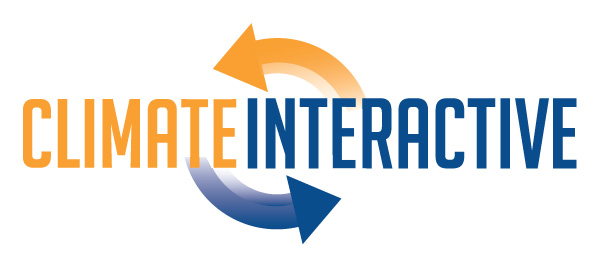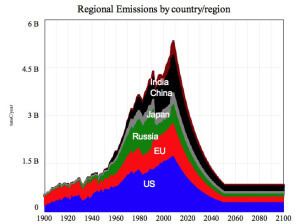AN ANALYSIS BY CLIMATE INTERACTIVE PREDICTS THAT THE COLLECTIVE TARGETS TO REDUCE GREENHOUSE GASSES AT THE COP21 CONVENTION IN PARIS will reduce the earth’s warming and the end of the century by about 6.3 degrees Fahrenheit. (New York Times – September 28, 2015)
COP21 is the 21st Conference on Parties to the United Nations Framework Convention on Climate Change being held in Paris from November 30 – December 11, 2015.
Please see related article on the COP21:
According to the New York Times article, if the collective targets of nations pledging to reduce emissions are met, “That would be the biggest reduction in the history of global climate politics, and a sign that 20 years of disappointing negotiations may be giving way to an era when countries start to move the needle on projected global temperatures.”
But how does the United Nations predict global temperatures?
Actually it doesn’t.
It uses analyses by researchers at Climate Interactive, a not-for-profit organization based in Washington, DC that has developed an award-winning computer simulation that helps people understand the long-term climate impacts of policy scenarios to reduce greenhouse gas emissions. It allows for the rapid summation of national greenhouse gas reduction pledges in order to show the long-term impact on our climate.
The computer simulation tool is called C-Roads. It was developed by a team from Climate Interactive, Ventana Systems, UML Climate Change Initiative and MIT.
Ventana Systems, based in Harvard, MA, helps organizations in complex environments make better decisions through a combination of high-quality models and advanced treatment of data.
The UML Climate Change Initiative draws its members from all six Colleges and Schools of UMass Lowell and from departments and disciplines as diverse as environmental science, public health, engineering, education, management, sociology, art, and others to address climate change through education, research, and developing solutions to transition to a more sustainable and resilient society.
Climate Interactive Simulation
C-Roads stands for “Climate Rapid Overview and Decision Support” simulator. It is easily used by non-modelers, and runs in less than 0.1 second on a laptop computer.
It has undergone scientific review by a committee chaired by Dr. Robert Watson, former chair of the Intergovernmental Panel on Climate Change. In 2013 C-Roads was awarded the System Dynamics Society Award for the best “Real World” Application of System Dynamics.
But how is it used by the United Nations project to predict global temperatures?
It is being used by the United Nations and countries participating in COP21 to run simulations of the effect of their own and other nations reduced/increased emissions.
For example, according to the climate interactive website, it “allows users to ask questions such as: what if all countries follow their current commitments? What if the EU reduces emissions below 1990 by 2050, Mexico drops 50% below 2002 by 2050, China continues decreasing its emissions intensity, and so on?”
The origin of C-Roads was the 1997 Ph.D dissertation of Dr. Thomas Fiddaman, “Feedback Complexity in Integrated Climate-Economy Models,” MIT Sloan School of Management.”
Dr. Thomas Fiddaman
Dr. Fiddaman now works with Ventana Systems, as well as other economy-energy-environmental simulations.
In addition to C-Roads, Climate Interactive has developed other simulations (based on C-Roads) but in different forms geared towards education and to focus on different C-Roads results.
These include:
- C-Learn, which is available on-line for anyone to use, adapt, extend and translate data into new languages;
- Climate Momentum Simulation, which is designed to quickly show how changing CO2 emissions can have a dramatic effect on our planet;
- Climate Pathways, an app allowing users to guess emissions trajectories needed to limit global warming for use on an iPhone, iPad or iPod.
- World Climate, a role-playing game designed for groups to experience the dynamics of what the COP21 negotiations will face in Paris.
Use this site to request a C-Roads download and join a webinar to learn more about the tool and how to use it.



Pingback: If Climate Change isn’t Real, Then Why is there a Paris Summit? / Persian Gulf May Become too Hot for Human Survival | Vero Communiqué
Pingback: Entertaining Facebook Climate Change Chatter | Vero Communiqué